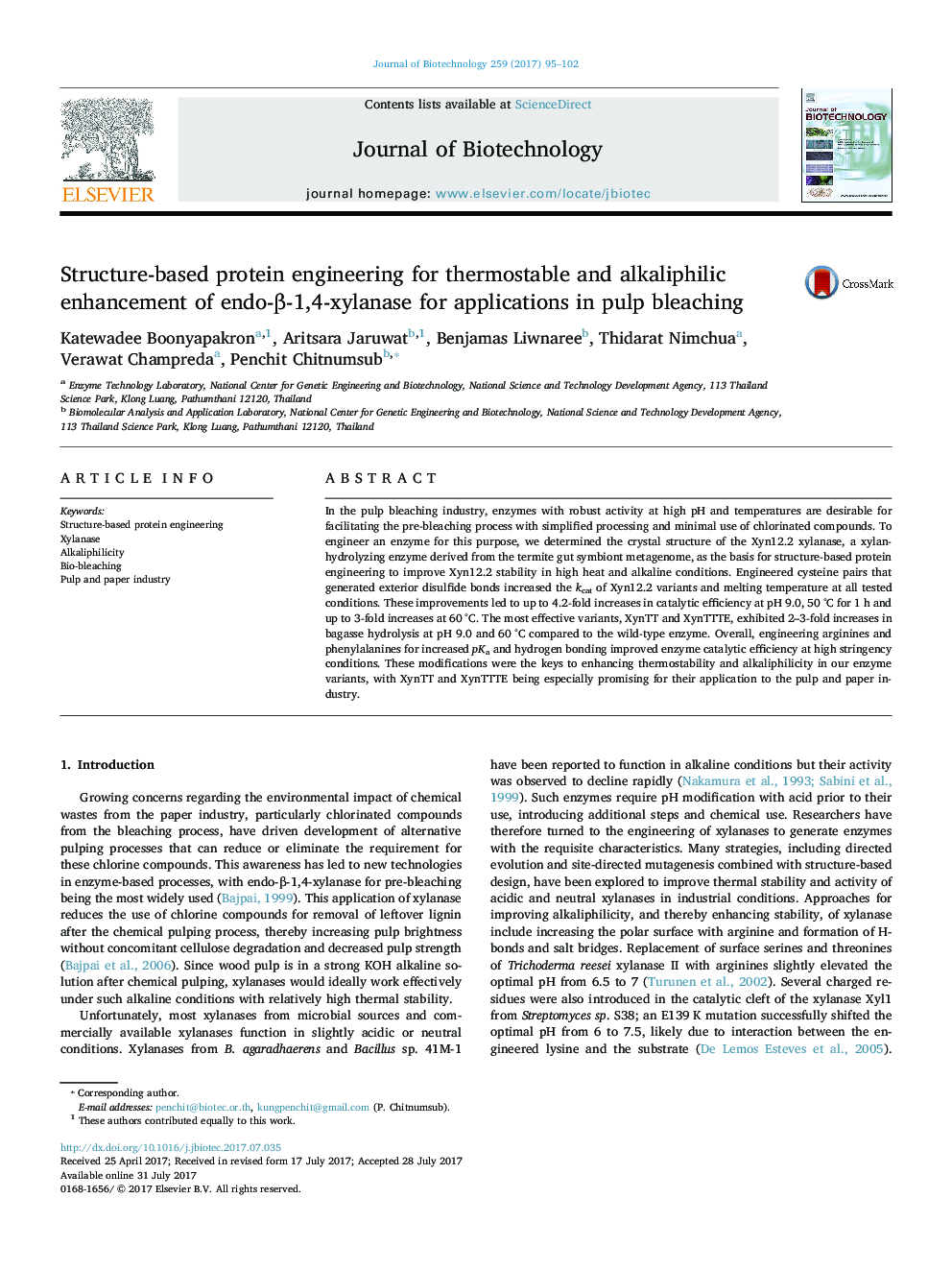| Article ID | Journal | Published Year | Pages | File Type |
|---|---|---|---|---|
| 6451937 | Journal of Biotechnology | 2017 | 8 Pages |
â¢The crystal structure of Xyn12.2 was determined and used for structure-based design.â¢Xyn12.2 variants demonstrate enhanced thermostability and alkaphilicity.â¢Exterior disulfide bonds are recommended for improved enzyme performance.â¢XynTT and XynTTTE exhibited 2-3-fold increases in bagasse hydrolysis at pH 9.0 and 60 °C.â¢XynTT and XynTTTE are potential candidates for industrial applications of xylanase.
In the pulp bleaching industry, enzymes with robust activity at high pH and temperatures are desirable for facilitating the pre-bleaching process with simplified processing and minimal use of chlorinated compounds. To engineer an enzyme for this purpose, we determined the crystal structure of the Xyn12.2 xylanase, a xylan-hydrolyzing enzyme derived from the termite gut symbiont metagenome, as the basis for structure-based protein engineering to improve Xyn12.2 stability in high heat and alkaline conditions. Engineered cysteine pairs that generated exterior disulfide bonds increased the kcat of Xyn12.2 variants and melting temperature at all tested conditions. These improvements led to up to 4.2-fold increases in catalytic efficiency at pH 9.0, 50 °C for 1 h and up to 3-fold increases at 60 °C. The most effective variants, XynTT and XynTTTE, exhibited 2-3-fold increases in bagasse hydrolysis at pH 9.0 and 60 °C compared to the wild-type enzyme. Overall, engineering arginines and phenylalanines for increased pKa and hydrogen bonding improved enzyme catalytic efficiency at high stringency conditions. These modifications were the keys to enhancing thermostability and alkaliphilicity in our enzyme variants, with XynTT and XynTTTE being especially promising for their application to the pulp and paper industry.
